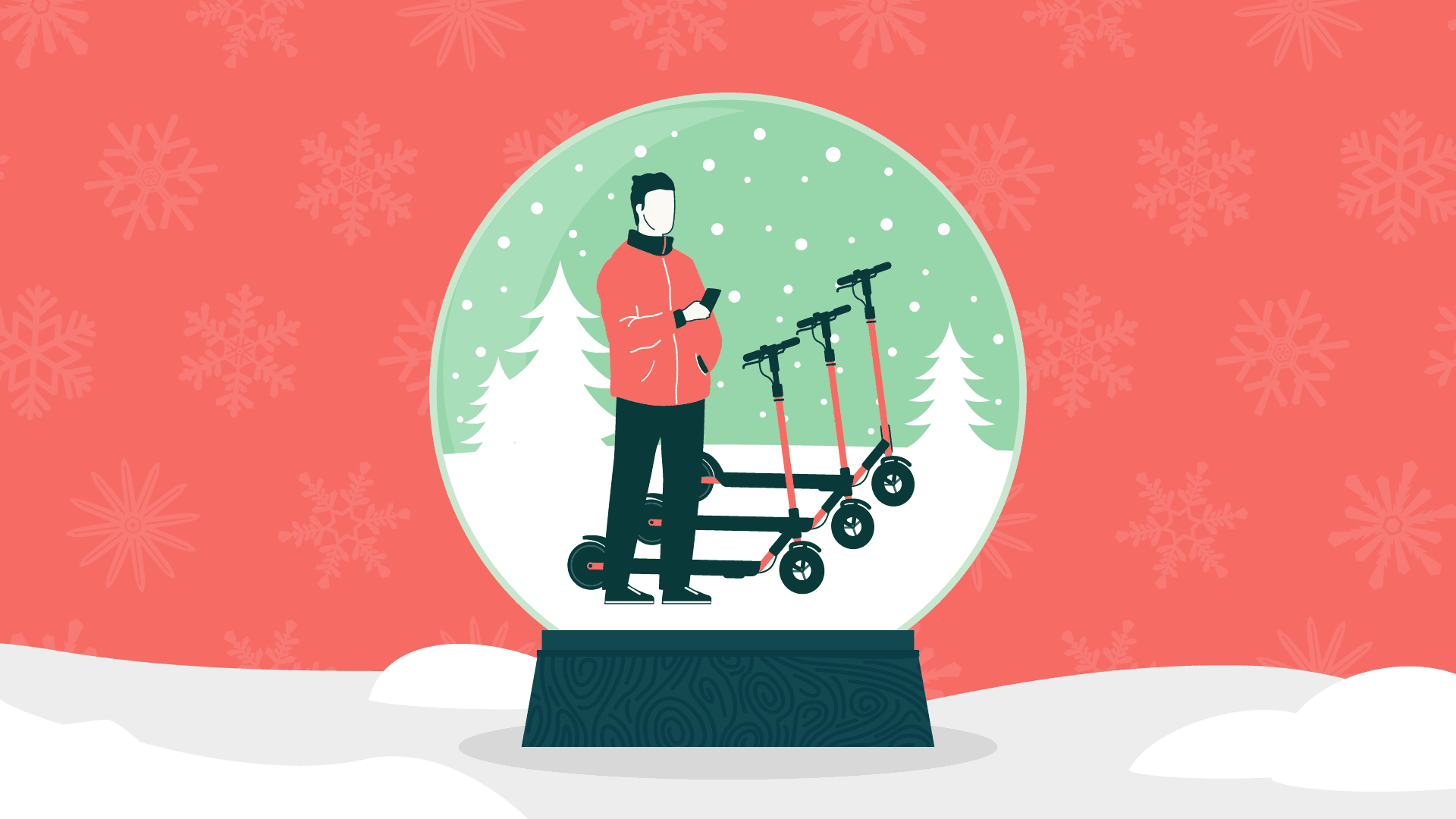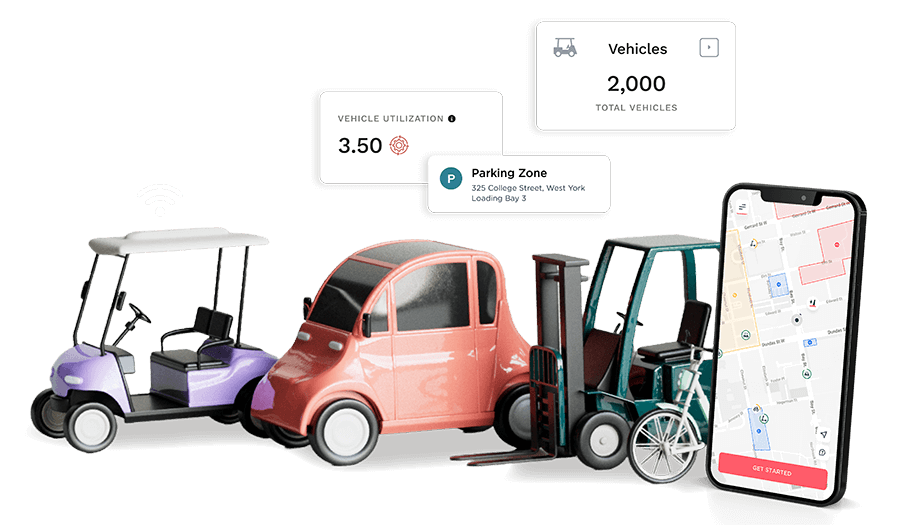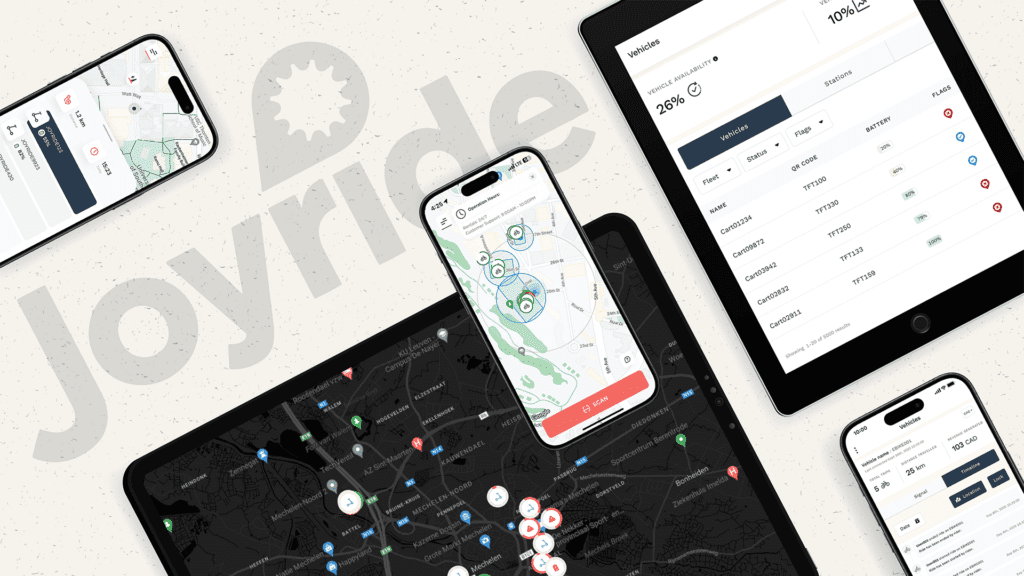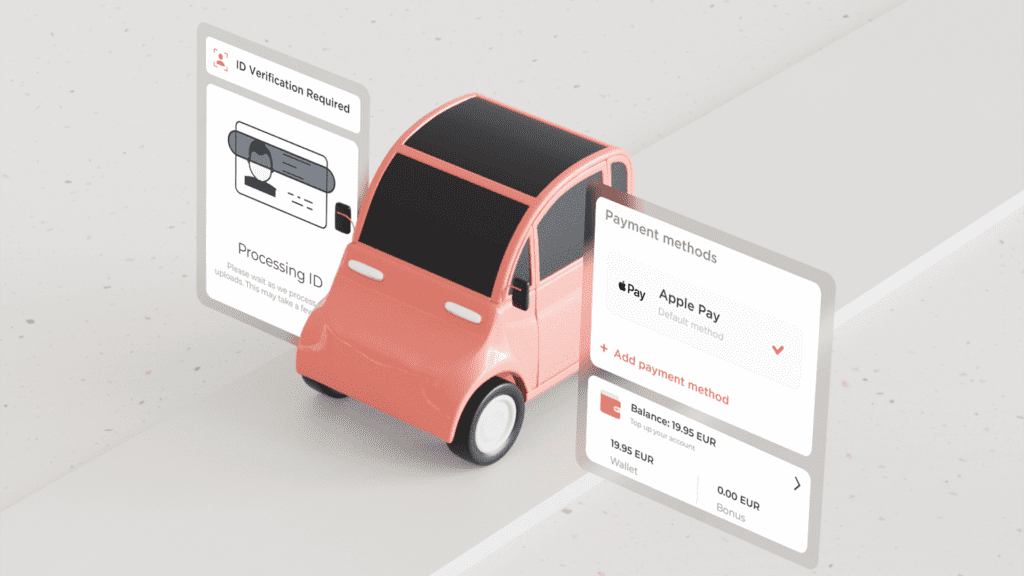As winter winds blow into the Northern Hemisphere, life doesn’t stop moving. In fact, private car use and other insulated modes–like taxis, ride hailing and public transit–tend to see ridership rise as temperatures go down. The result is congested roads, increased travel times and impossible parking (as if you needed more stress during the holidays).
Obviously no one wants to bike through a blizzard (unless you’re this guy), but weather permitting, shared mobility devices are ridden throughout the colder months. Those who brave the elements on a scooter or bike can not only get to their destination quicker, but reap the rewards of active transportation.
So how do shared micromobility companies ride out the winter season?
There are three common scenarios for public fleet operators:
- Continued full service
- Partial service
- Hibernation
Today, we’re exploring these three options as well as best practices for operators to do anything but be slow in the snow:
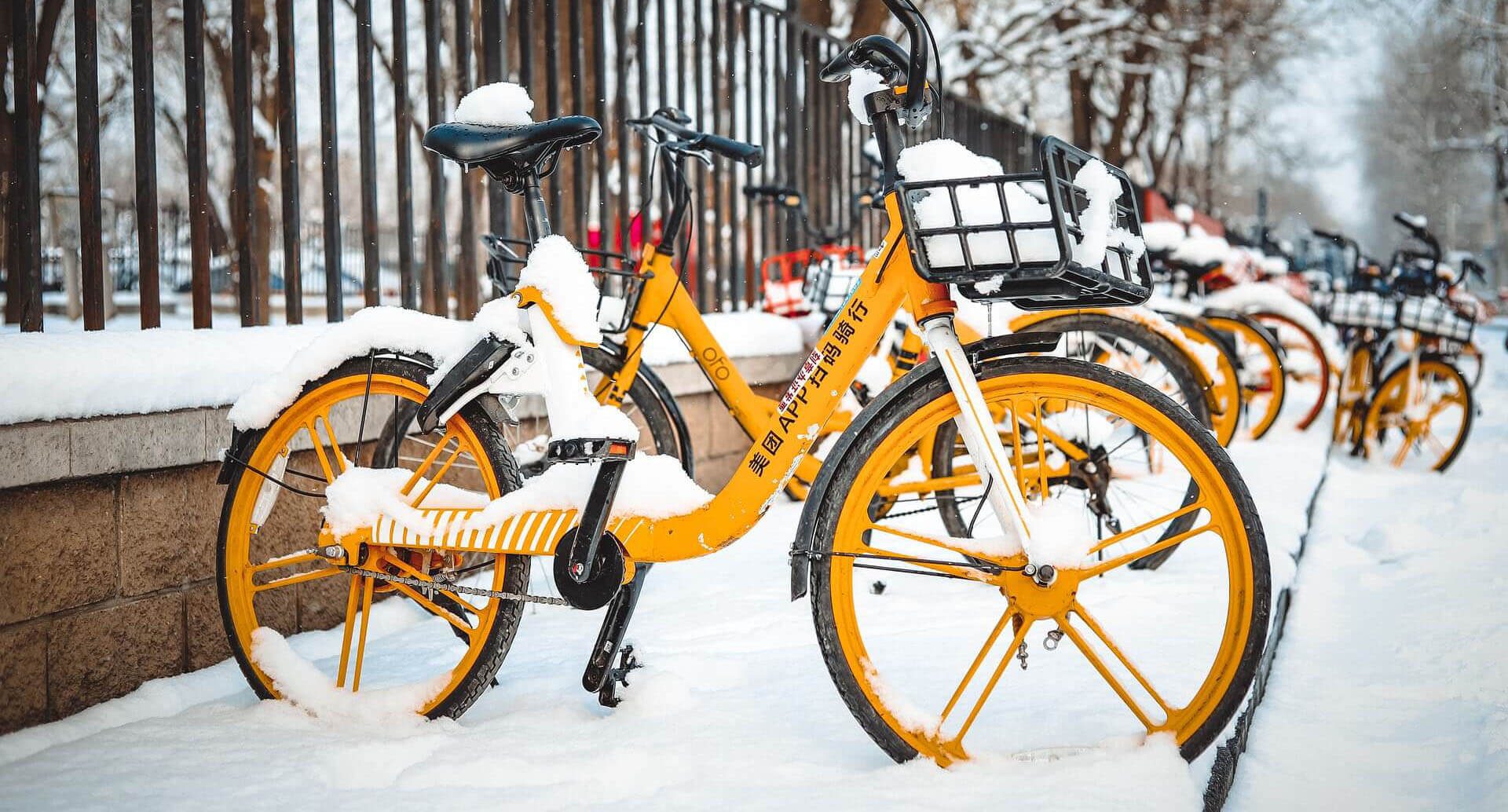
[Photo by kangning on Pixabay]
1. Continued full service
The first and most obvious answer is to just keep riding! A 12-month operational season is why many shared mobility startups go for mild and tropical markets. Winter temperatures between 11 – 21°C (51.8 – 69.8°F) in Queensland, Australia mean riders can enjoy Oggy scooters all year round. In actual fact, because the southern states experience far more wintry conditions, ridership increases as residents of other states come to holiday in Queensland.

It’s a different story for our Northern friends but you’ll still see vehicles available in colder climates. Canada’s Bike Share Toronto, for example, operates 365 days a year. Consumer preferences play a big part, but the main difference is that some large public sharing companies actually lose money in the winter. Service is continued with the help of subsidies.
Do people bike in the winter?
Cycling or scooting may be a chillier choice, but it remains a very real (and important) option for citizens without easy access to private transportation options. Those who cycle for the last mile of their commute get to enjoy the flexibility of bike sharing without the hassle of winter vehicle maintenance.
As for scooters, do people still ride in the snow? According to Estonian scooter share, Tuul, the answer is yes! In severe weather conditions Tuul temporarily suspends service, but otherwise operates through winter.
Winter wonderland or wasteland?
Shared micromobility services in continental and temperate climates are still figuring out how to tackle winter–or if they even should. There’s a lot of variables to consider; weather events, city-specific frameworks for road/bike path clearing, increased vehicle maintenance, battery performance, safety concerns, and of course the actual existence (or lack) of market demand. We can’t predict the weather or give financial advice, but if your business can only sustain profitability in the best-case scenario (mild weather and medium demand), continued full service may not the best choice.
2. Partial service
Depending on geography and local regulations, partial service could mean reducing fleet size, limiting operational hours, relocating vehicle hubs or adjusting the boundaries of the service area. An operator with a wide coverage zone may choose to hibernate certain hubs and stay active in zones of concentrated demand. For example, in a university town there may be little demand at hubs near campus until students return from holiday break.
In Germany, nextbike continues service during winter time in most cities, but reduces the number of bikes in certain locations. In the UK, Stirling nextbikes are out of service from mid-December to mid-January. Memberships are paused for the month and restarted once service resumes. A short hibernation for the coldest 1-2 months of the year gives the ops team time to attend to non-critical maintenance (and take a well earned rest).
Keeping spirits bright
Alcohol consumption goes way up around the holidays. Leading up to Christmas 2020, Lime’s ‘Safer with Lime’ campaign called attention to the issue of drunk riding during the holidays, reminding users to stick to “Lime and Soda”.

In 2021, Voi disabled their Bristol scooters on New Year’s Eve until the morning of New Year’s Day—making drunk riding impossible. The fleet was also locked on Christmas Eve until the morning of Christmas Day. The need for implementing a DUI Reaction Test for scooter rentals is clear, but not all in-app tools are created equal.
For Joyride operators who want riders to find a safe late night ride back home, Safe Ride is a science-backed gamified test that instantly gauges the rider’s reflexes and reaction time in the most reliable way without impacting user flow. Learn more about Safe Ride here.
Go with the snow
Seasonality makes a multi-market approach all the more appealing. Hoppy operates public scooter fleets in Spain and Belgium. While their Belgian fleet hibernates, Hoppy maintains its operations in Spain. With a foothold in both the north and south they flatten the curve for seasonal demand fluctuations.
It’s a less common practice, but we’ve also seen fleets move municipalities—even countries—rather than be stored for the winter. A multi-market operator can migrate their vehicles to southern tourist hotspots or lease them to another operator on a short term basis.
3. Hibernation
At the end of the day, shared micromobility is an industry affected by the seasonality. When the weather outside is truly frightful, it’s not just unrealistic to ride an e-scooter—it’s dangerous. Some of the snowier Eastern European, Asian, North American and Nordic markets say goodbye to shared mobility until spring.
A time for growth
Winter is usually the nurturing period for large fleet orders. Many operators thus focus on raising funds as well as renewing/applying for permits for the next year.

Since most micromobility devices are manufactured in China, vehicle orders must be placed well before Chinese New Year to ensure shipment for the spring season (typically by the end of October). Your team can also use this time to stock spare parts and attend to non-urgent maintenance such as paint, vinyl decals, cleaning etc…)
Tip:
Your fleet might be hibernating but your business can still be active! Look out for opportunities to engage with your community with in-person events and social media posts.
Should you weather the winter season?
If you choose to operate in the winter, know that revenue and ridership will fluctuate. Precautionary safety measures such as lowering the maximum vehicle speed or raising the threshold for battery critical warnings are just the tip of the iceberg for a successful season.
Want access to a playbook for winter operations? Check our new course on Joyride Academy. You’ll find tips for fleet storage, cold-weather battery maintenance, customer communications, holiday marketing and more! Click here to enroll for free, and see below for an excerpt:

